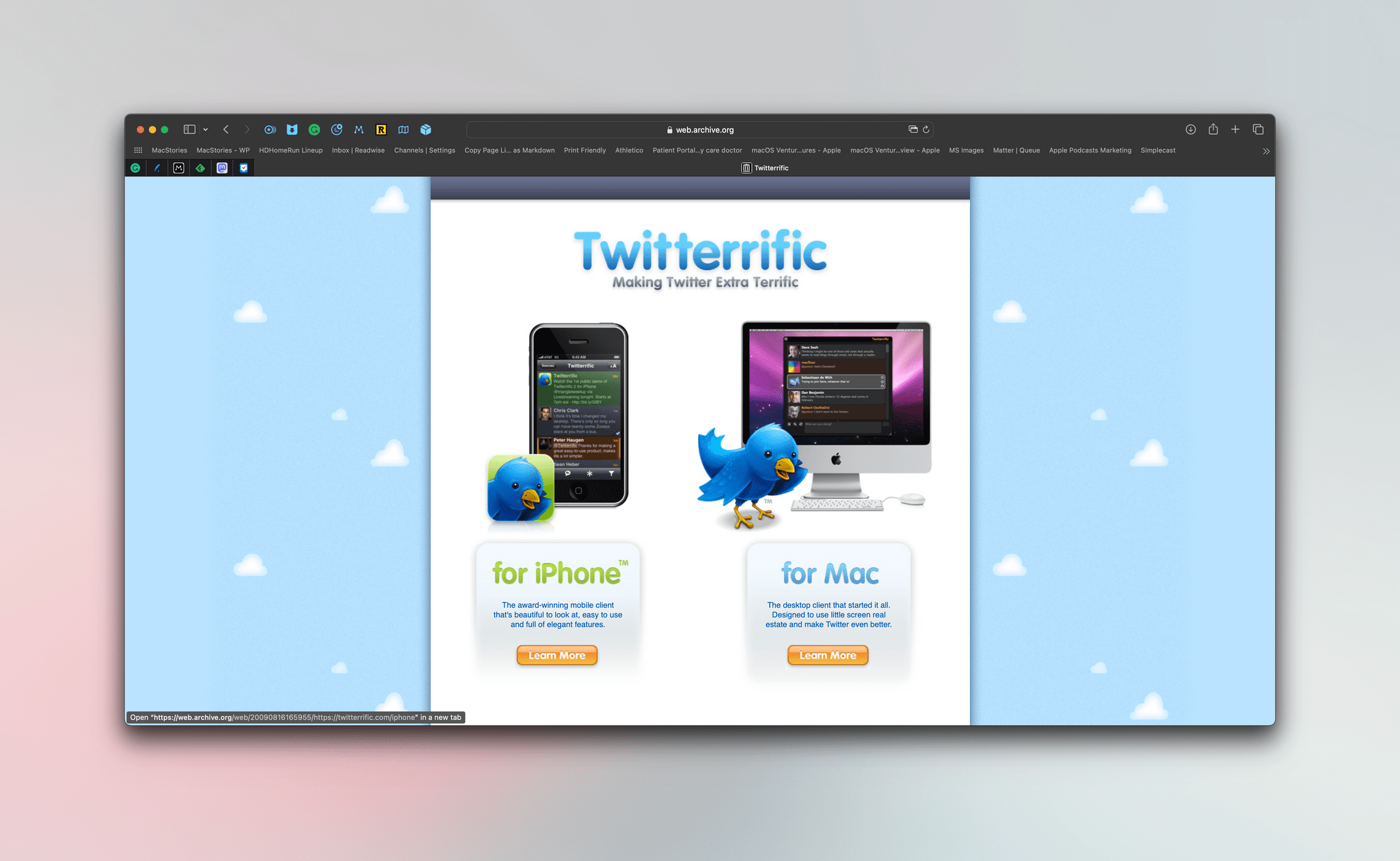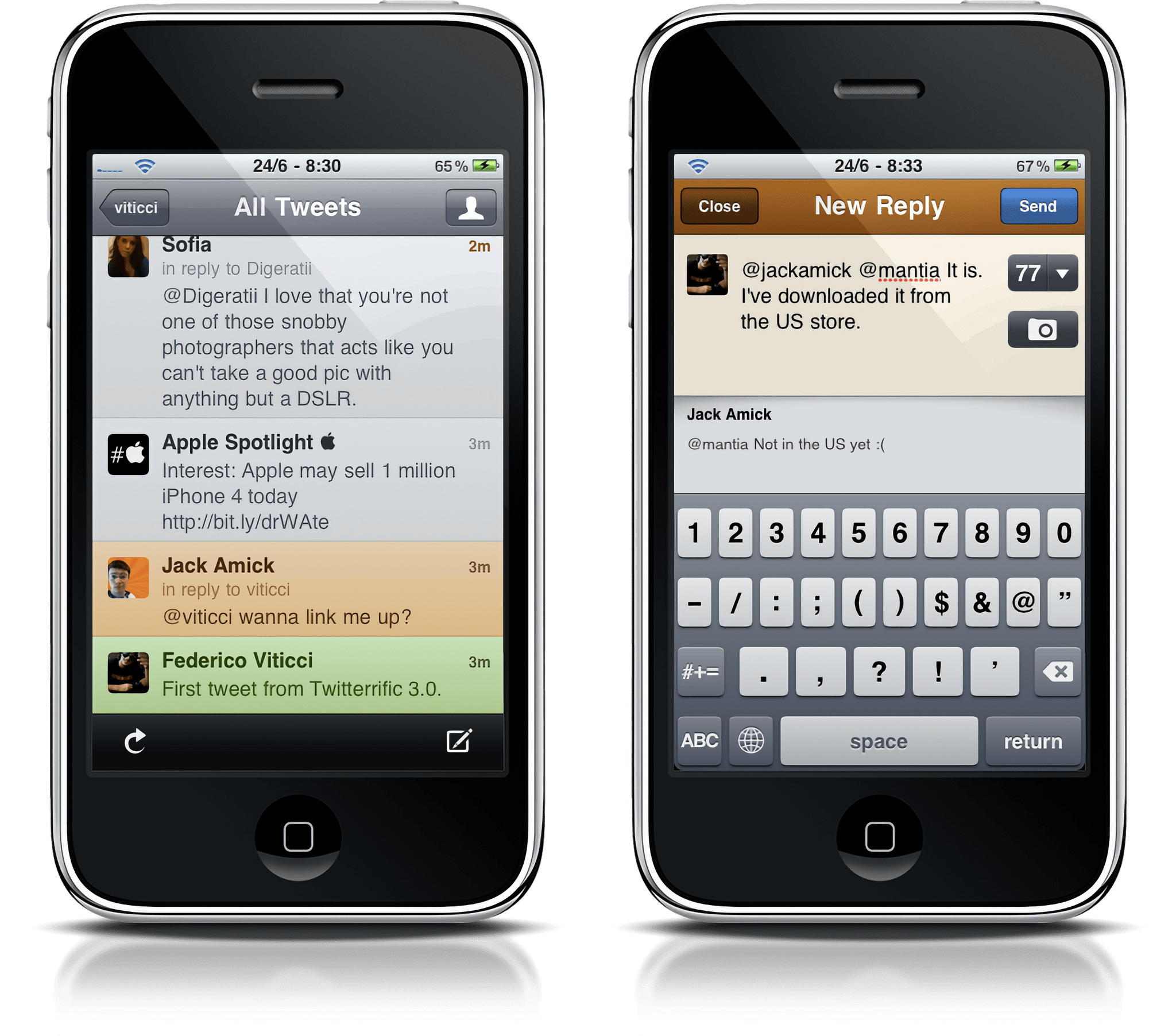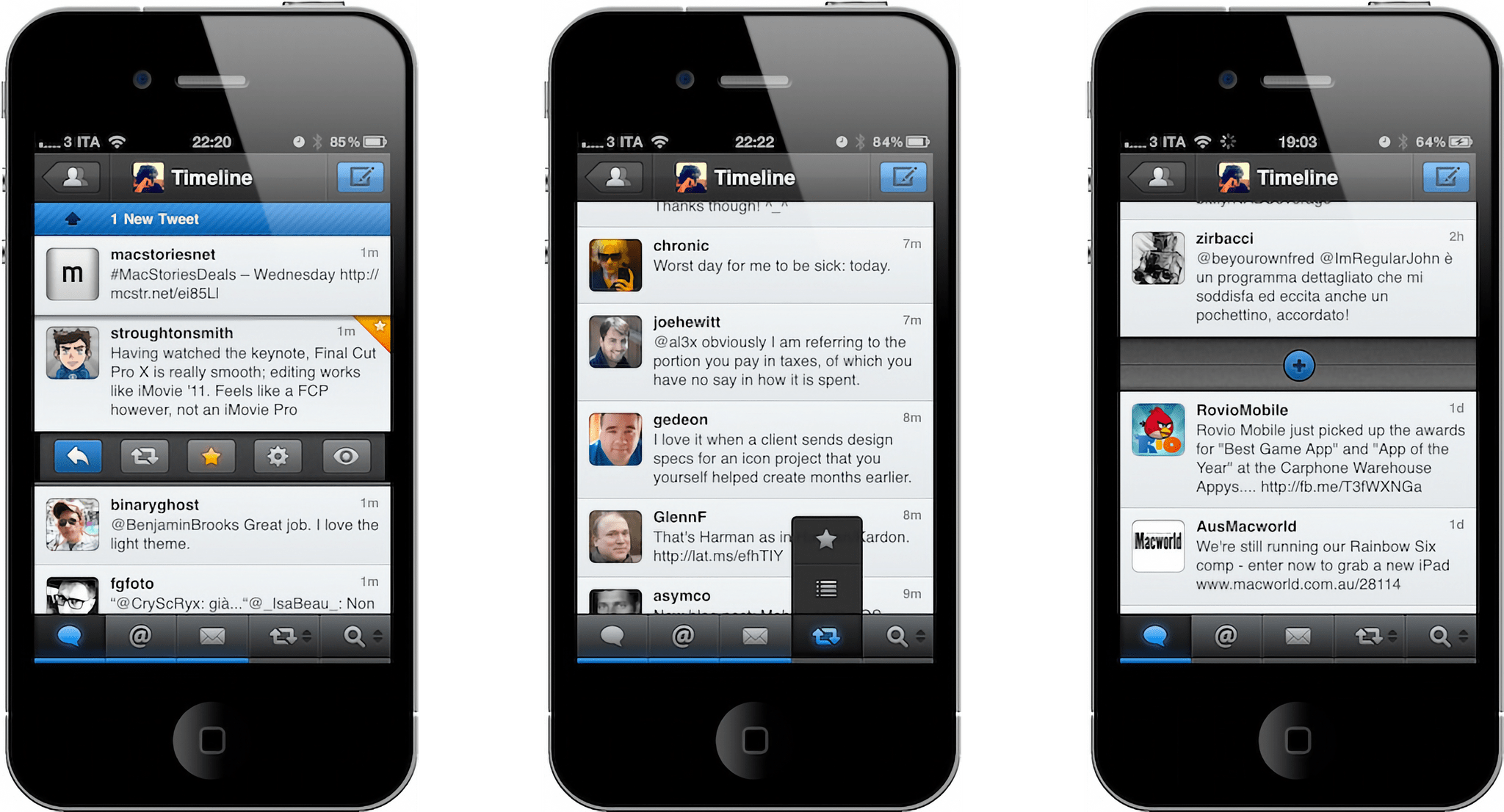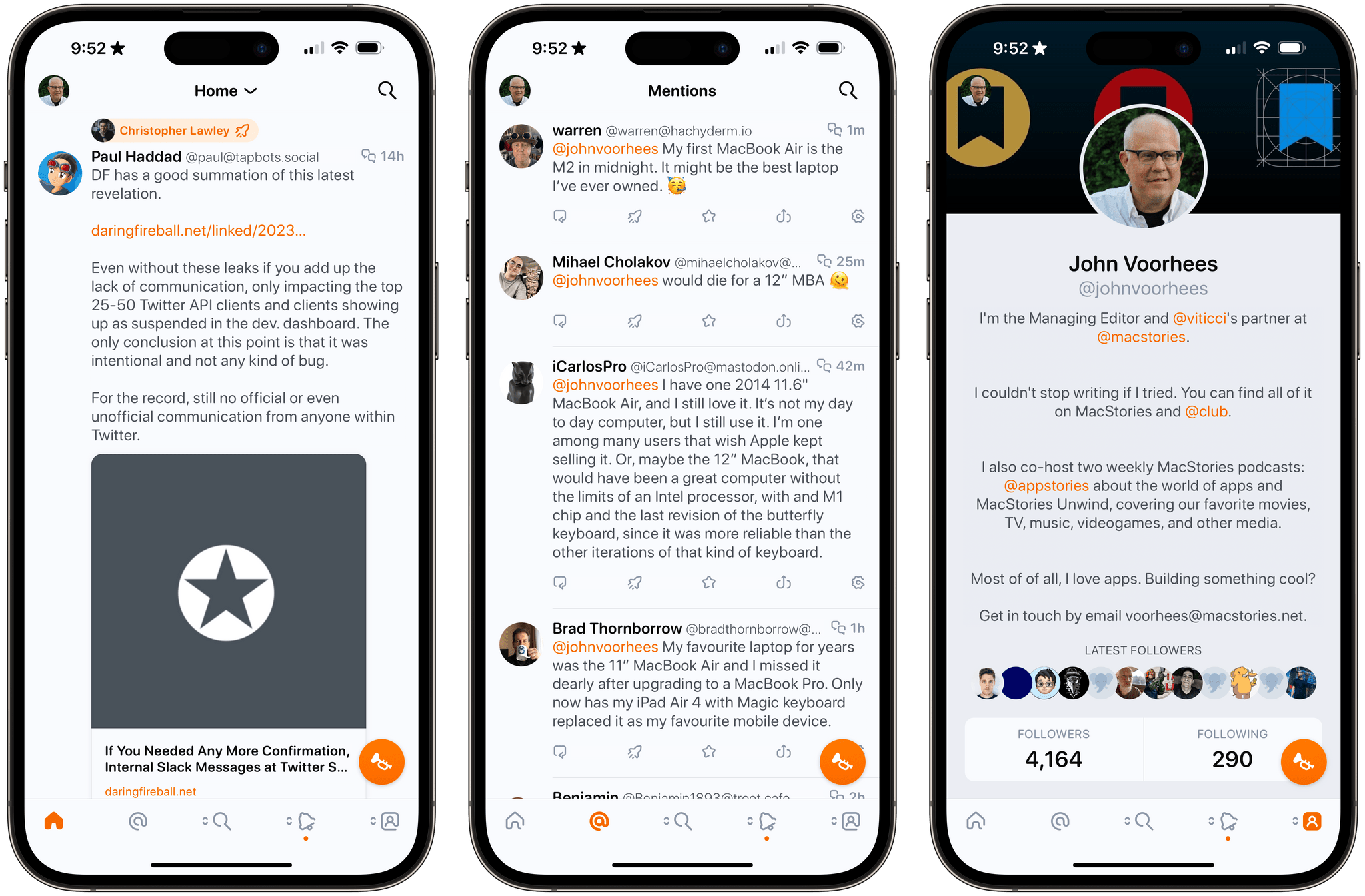Late yesterday, The Information reported that it had seen internal Twitter Slack communications confirming that the company had intentionally cut off third-party Twitter app access to its APIs. The shut-down, which happened Thursday night US time, hasn’t affected all apps and services that use the API but instead appears targeted at the most popular third-party Twitter clients, including Tweetbot by Tapbots and Twitterrific by The Iconfactory. More than two days later, there’s still no official explanation from Twitter about why it chose to cut off access to its APIs with no warning whatsoever.
To say that Twitter’s actions are disgraceful is an understatement. Whether or not they comply with Twitter’s API terms of service, the lack of any advanced notice or explanation to developers is unprofessional and an unrecoverable breach of trust between it and its developers and users.
Twitter’s actions also show a total lack of respect for the role that third-party apps have played in the development and success of the service from its earliest days. Twitter was founded in 2006, but it wasn’t until the iPhone launched about a year later that it really took off, thanks to the developers who built the first mobile apps for the service.
By 2007 when the iPhone launched, The Iconfactory’s Twitter client, Twitterrific, was already a hit on the Mac and had played a role in coining the term ‘tweet’. The app was first to use a bird icon and character counter too. And, although the iPhone SDK was still months off, The Iconfactory was already experimenting with bringing Twitterrific to the iPhone with the help of a jailbroken iPhone and class dumps of iPhone OS.
Despite the popularity of the iPhone, Twitter didn’t build its own mobile app. Instead, the company purchased Loren Brichter’s Tweetie in 2010. Not only was Tweetie a beautifully designed app that performed better on early iPhones than many of its competitors, but it also introduced the world to ‘pull-to-refresh, a UI detail that was later folded into iOS itself. Twitter re-skinned Tweetie as the official Twitter app, followed up not long after by a flawed iPad app, and later, a Mac version in early 2011 that Brichter had been working on at the time of the acquisition.
Even after Twitter had its own suite of apps, the third-party app market flourished. Tweetbot by Tapbots came along in 2011 and quickly became a favorite of many users, distinguishing itself with its steady stream of new power-user features and thoughtful design. But it wasn’t long before Twitter’s relationships with third-party developers began to sour. It started with a vague set of rules introduced in 2012 that preferred CRM and analytics apps over clients like Twitterrific and Tweetbot. The ups and downs over the years that followed are too numerous to count, but the consequence was that for many years few new Twitter clients were developed.
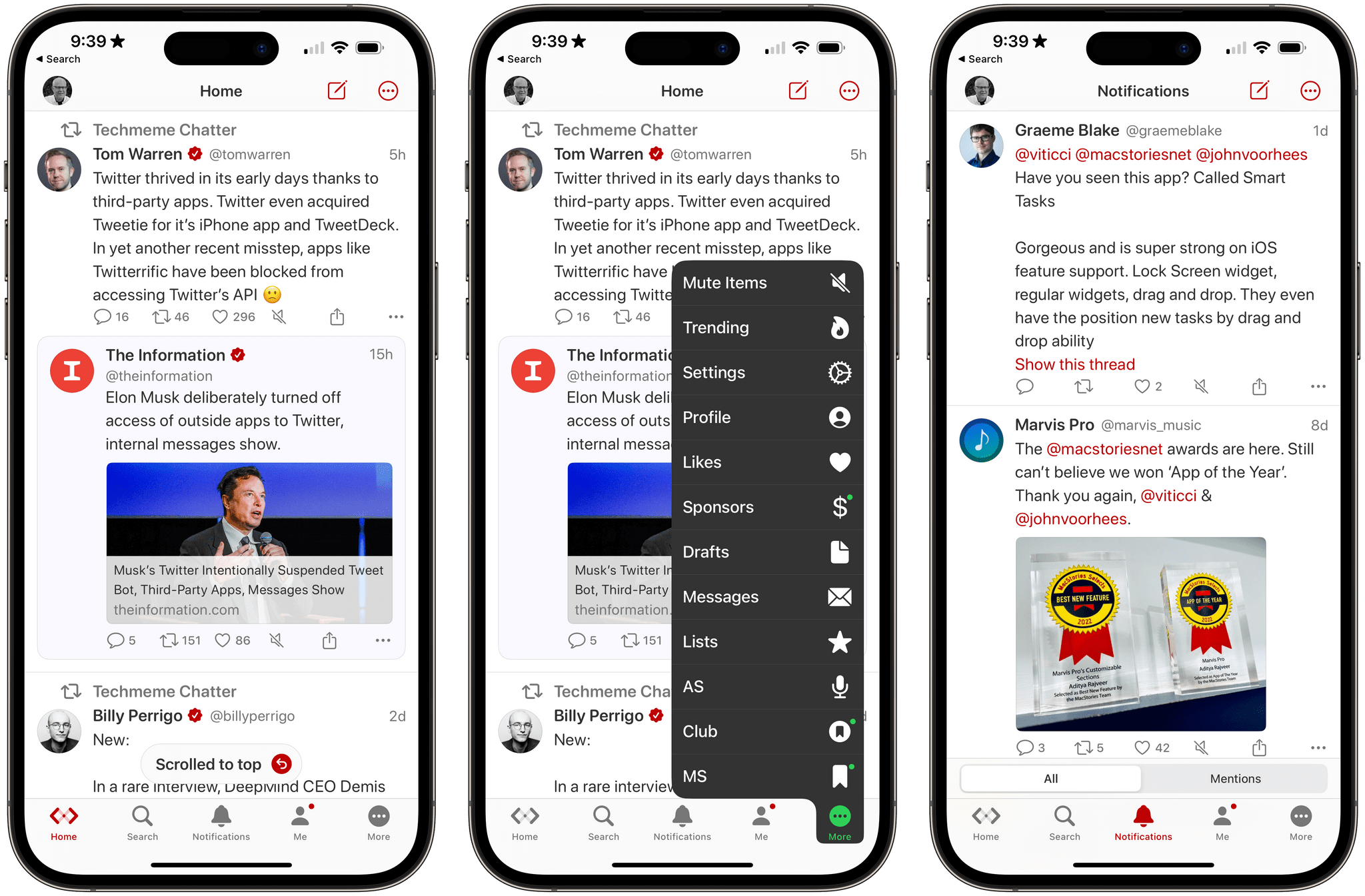
With the introduction of version 2.0 of its API, third-party Twitter apps, like Spring, gained new, innovative features.
However, relations began to thaw with the announcement of version 2.0 of the Twitter API, which went into effect in 2021. Not only did the API update make new features available, but Twitter promised to loosen restrictions on third-party developers. That led to renewed interest in third-party client development, resulting in innovative new features in apps like Spring, which was a runner-up in the Best App Update category of the 2022 MacStories Selects awards.
As it turns out, Twitter’s developer detente was short-lived. The fact that Elon Musk’s Twitter has cut off third-party developers isn’t surprising. Franky, I expected it sooner, but I didn’t expect it to be done with an utter lack of respect for the developers who played such a critical role in the service’s success for more than a decade. The number of people who use third-party Twitter apps may be small in comparison to the service’s overall user base, but the role of the developers of those apps and the value of those power-users to Twitter’s success is outsized by comparison. The developers of Twitterrific, Tweetbot, and every other app that has lost access to Twitter’s APIs deserved better than a silent flip of the switch late one Thursday night.
There have been many moments over the past decade when we worried that third-party Twitter apps might have met their end and didn’t. Unfortunately, I think this time, those past fears have been realized.
The MacStories team moved its social media presence to Mastodon in mid-December. So, if you’ve lost the use of your favorite third-party Twitter app and are looking for an alternative place to keep up on everything Apple, you can follow us there:
- MacStories Accounts
- MacStories Team Accounts.
Also, Tweetbot users will be happy to know that Tapbots is working on a Mastodon client called Ivory that is currently in beta and should be released soon. We’ll have coverage of Ivory on MacStories as soon as it’s released publicly.



